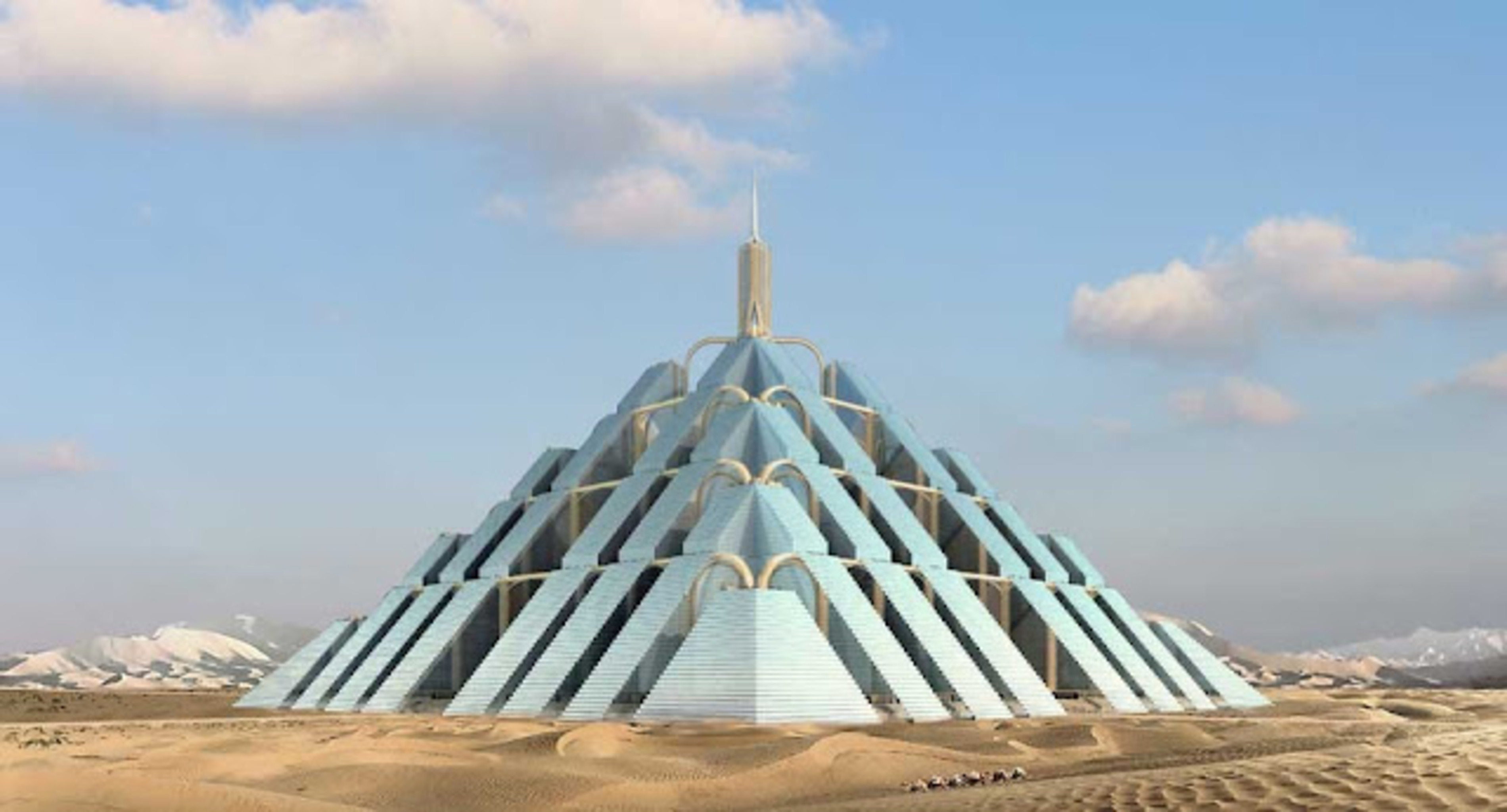
In recent decades, Dubai has cultivated its skyline with many architectural wonders, including the Burj Khalifa and the Dubai Frame. The city is gearing up to add another jewel to its crown: the Ziggurat Pyramid. This mega-structure won’t just be an architectural marvel but is also set to embody futuristic sustainability, following in the footsteps of other carbon-neutral projects like Saudi Arabia’s The Line.
The Ziggurat Pyramid was announced in 2008, and construction started in 2021. Slated for completion by 2028, this structure is poised to eclipse the Great Pyramid of Giza in both size and splendor. Its design, inspired by the timeless aesthetics of ancient Egyptian and Mayan pyramids, is scaled to a magnitude never seen before. Towering at an astonishing height of 1,200 meters and sprawling across 2.3 square kilometers, the Ziggurat is designed to house a staggering one million people.
Who is the mastermind behind all this? The Ziggurat Pyramid is the brainchild of Timelinks, a Dubai-based consortium of urban planners, scientists, and architectural designers. This team has not only envisioned a building of unprecedented scale but also one that harmoniously blends with its surroundings and is sustainable at its core. Their innovative approach to urban design could very well become a blueprint for future megacities around the world.

The Ziggurat will be carbon-neutral and self-sustainable
The technological advances that will be used in the Ziggurat aim to minimize climate change and maximize eco-friendly innovation. One way that this gargantuan structure is going to do that is through a completely carbon-neutral infrastructure. Everything within the pyramid, from the lighting to the appliances, will be powered by renewable energy sources, including solar panels and wind turbines. This initiative places Dubai at the forefront of sustainable urban development, showcasing a commitment to creating livable spaces that harmonize with the environment.
The Ziggurat Pyramid is also redesigning urban mobility. Those who decide to live here will enjoy the pyramid’s own internal public transport system, which will traverse not only horizontally but also vertically across the building. This revolutionary system aims to eliminate the need for cars within the pyramid, thereby reducing traffic congestion and pollution and contributing further to the structure’s eco-friendly ethos.
Spread over 300 floors, the Ziggurat Pyramid is envisaged as a self-sufficient vertical city. It will encompass residential, commercial, and recreational spaces, providing a holistic living experience. From lush green parks to bustling marketplaces and tranquil residential areas, every aspect of urban life is thoughtfully incorporated into this mega-structure.
While the Ziggurat Pyramid is not the only carbon-neutral building project on the horizon, it does take a bold step into the future of urban living. By 2028, Dubai is set to unveil not just the tallest or the largest structure but a pioneering model of sustainable and integrated urban development.



